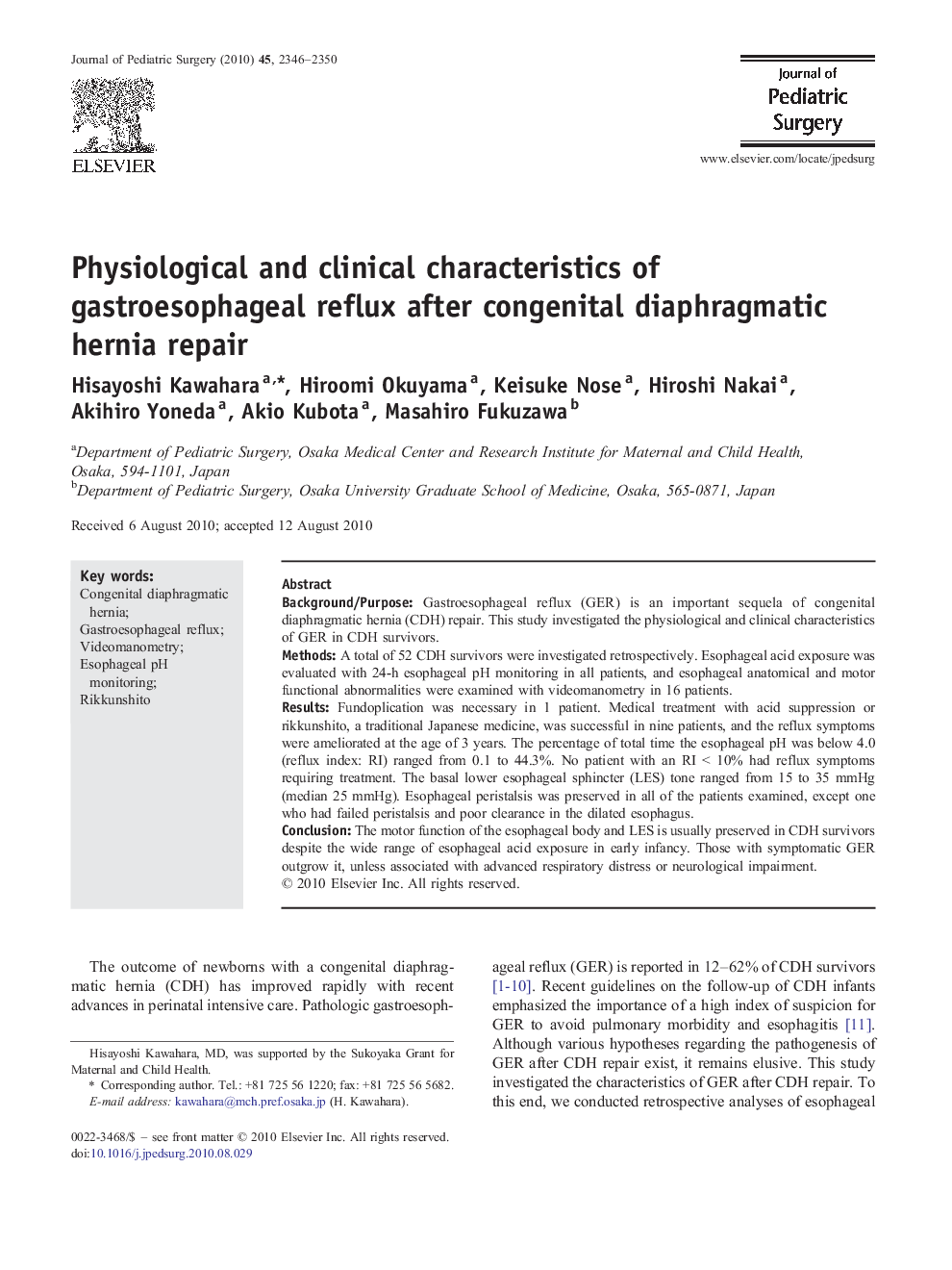| Article ID | Journal | Published Year | Pages | File Type |
|---|---|---|---|---|
| 4157620 | Journal of Pediatric Surgery | 2010 | 5 Pages |
Background/PurposeGastroesophageal reflux (GER) is an important sequela of congenital diaphragmatic hernia (CDH) repair. This study investigated the physiological and clinical characteristics of GER in CDH survivors.MethodsA total of 52 CDH survivors were investigated retrospectively. Esophageal acid exposure was evaluated with 24-h esophageal pH monitoring in all patients, and esophageal anatomical and motor functional abnormalities were examined with videomanometry in 16 patients.ResultsFundoplication was necessary in 1 patient. Medical treatment with acid suppression or rikkunshito, a traditional Japanese medicine, was successful in nine patients, and the reflux symptoms were ameliorated at the age of 3 years. The percentage of total time the esophageal pH was below 4.0 (reflux index: RI) ranged from 0.1 to 44.3%. No patient with an RI < 10% had reflux symptoms requiring treatment. The basal lower esophageal sphincter (LES) tone ranged from 15 to 35 mmHg (median 25 mmHg). Esophageal peristalsis was preserved in all of the patients examined, except one who had failed peristalsis and poor clearance in the dilated esophagus.ConclusionThe motor function of the esophageal body and LES is usually preserved in CDH survivors despite the wide range of esophageal acid exposure in early infancy. Those with symptomatic GER outgrow it, unless associated with advanced respiratory distress or neurological impairment.
